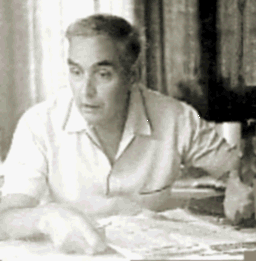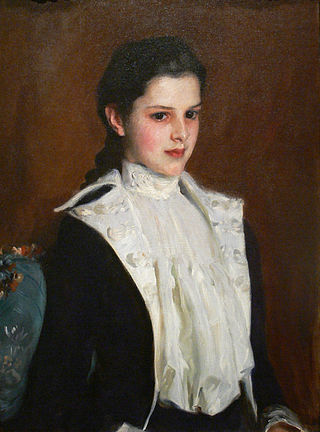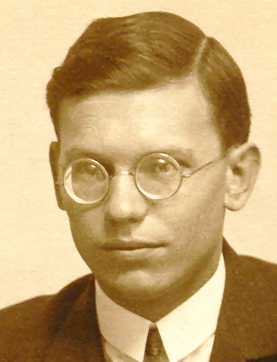
Interlingua is an international auxiliary language (IAL) developed between 1937 and 1951 by the American International Auxiliary Language Association (IALA). It ranks among the most widely used IALs and is the most widely used naturalistic IAL – in other words, those IALs whose vocabulary, grammar, and other characteristics are derived from natural languages, rather than being centrally planned. Interlingua literature maintains that (written) Interlingua is comprehensible to the hundreds of millions of people who speak Romance languages, though it is actively spoken by only a few hundred.
An international auxiliary language is a language meant for communication between people from all different nations, who do not share a common first language. An auxiliary language is primarily a foreign language and often a constructed language. The concept is related to but separate from the idea of a lingua franca that people must use to communicate. The study of international auxiliary languages is interlinguistics.

Richard "Ric" Berger (1894–1984) was a Swiss professor of design, decoration, and art history. He is best known for his numerous newspaper articles about historical monuments, mainly in the French-speaking part of Switzerland, including his own drawings of the buildings. Through these articles, he contributed to an increased interest in historical monuments and settings among many hitherto uninformed people, and probably also contributed indirectly to a wider interest in preserving and saving historical monuments from destruction.
Alexander Gottfried Friedrich Gode-von Aesch was a German-born American linguist, translator and the driving force behind the creation of the auxiliary language Interlingua.

Bilthoven is a village in the Dutch province of Utrecht. It is a part of the municipality of De Bilt. It has a railway station with connections to Utrecht, Amersfoort and Baarn. It is home to the Netherlands National Institute for Public Health and the Environment, RIVM; and to the Union Mundial pro Interlingua, UMI, which promotes Interlingua internationally.
Panorama in Interlingua is the primary periodical for the language Interlingua, published bimonthly. It was first issued in January 1988. The magazine is based in Odense, Denmark, and is written completely in Interlingua and the activities of the Union Mundial pro Interlingua (UMI) appear in each issue, but the content is not necessarily about the language itself. Thomas Breinstrup, the editor in chief, is considered a leader of Interlingua style.

Alice Vanderbilt Shepard Morris was a member of the Vanderbilt family. She co-founded the International Auxiliary Language Association (IALA).
Interlingua: A Grammar of the International Language, sometimes called the Interlingua Grammar, is the first grammar of Interlingua. Released in 1951 by the International Auxiliary Language Association (IALA), it remains an authoritative reference work for Interlingua speakers and students of linguistics.
Alix Potet, who obtained her doctorate of sciences in 1990, is professor of informatics at the University of Rennes. Potet is Vice President of the Union Interlinguiste de France (UIF) as well as co-author of the French-language supplement to the manual Interlingua by Ingvar Stenström (1988) and of a French-Interlingua dictionary (1991).
Jeanne Martinet was a French semiotician and a proprietor of a semiotics school. Her husband was the eminent linguist André Martinet (1908–1999). In 1973, in Paris, Martinet published the book Clefs pour la sémiologie, which has been translated into numerous languages. In 1993, she co-authored, with her husband, the volume Mémoires d'un linguiste.
Interlingua, Instrumento Moderne de Communication International by Ingvar Stenström is a popular Interlingua course. As of 2006, it has been translated into Bulgarian, Danish, French, German, Hungarian, Portuguese, Romanian, Russian, and Swedish; translations into Norwegian and Lithuanian are in final preparation, and five additional languages are expected to follow.
Interlingua dictionaries are notable for their comprehensiveness; they tend to be larger than for other auxiliary languages. Some of the larger dictionaries are presented here.
Július Tomin was a Slovak high school teacher and author. He was persecuted during the Soviet occupation for promoting Interlingua as a second language.

Engelbert Pigal was an Austrian engineer. A speaker of Interlingua and two other auxiliary languages, he wrote two cosmological monographs in Interlingua.
The Union Interlinguiste de France, established in 1961, works to increase public knowledge and active use of Interlingua. It produces the magazine Unir, written in French and Interlingua and also established in 1961. In addition, the UIF makes other Interlingua publications available, arranges conferences and a General Assembly, submits articles to the mainstream press, and issues press releases. In 2007, the UIF was instrumental in gaining recognition of the Union Mundial pro Interlingua as an international organization.
Lingua e Vita is the official magazine of the British Interlingua Society (BIS). Founded in 1965 as an initiative of Brian C. Sexton, Lingua e Vita is a continuation of the earlier organ of the BIS, the Circular Letter.
André Schild : born in Fontainemelon or Cernier in the Swiss canton of Neuchâtel. He was a linguist and former administrator of the Universal Esperanto Association in Geneva, and the director of the Oficie por li lingue international auxiliari Occidental in the 1940s in Basel. He taught at the Benedict School (Bénédict-Schule) in Basel. He published the outline of his Neolatino system in 1947.
Interlingue and Interlingua are constructed international auxiliary languages.





